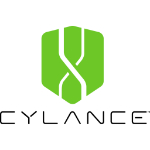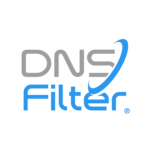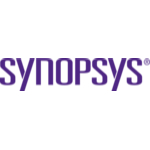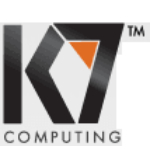
TechnologyCounter provides genuine, unbiased real user reviews to help buyers make informed decisions. We may earn a referral fee when you purchase through our links, at no extra cost to you.
List of 15 Best Cyber Security Software
Showing 1 - 15 of 117 products
ManageEngine Endpoint Central
Endpoint Protection Software for Enterprises
ManageEngine Endpoint Central is an all-in-one solution for advanced endpoint management and security, giving full control to your enterprises IT team. It offers a holistic approach to endpoint administration and protection catering to the complexity...Read ManageEngine Endpoint Central Reviews
ManageEngine Log360 is a log management and analytics solution that streamlines your organizations security and compliance processes. With advanced features like real-time event correlation, threat intelligence, and user behavior analytics, Log360 he...Read ManageEngine Log360 Reviews
AppTrana is a cybersecurity software that offers robust protection for websites, web applications, and APIs. With its advanced features and unparalleled functionality, AppTrana is dedicated to safeguarding your digital assets from online threats and...Read AppTrana Reviews
BitDefender is a leading cybersecurity company that has been providing top-notch protection against various online threats for over two decades. With its advanced and innovative solutions, BitDefender has become a trusted name in the industry, keepin...Read BitDefender Reviews
Webroot SecureAnywhere, the ultimate antivirus software designed to protect your device from all kinds of online threats. With its advanced security features and powerful scanning capabilities, Webroot ensures your digital life is always safe and sec...Read Webroot SecureAnywhere Reviews
The Resolver Vulnerability is a prevalent issue that can pose a serious threat to the security of any computer system. This vulnerability, which targets the DNS resolver software, can allow attackers to manipulate and intercept network traffic, poten...Read Resolver Vulnerability Reviews
Kogni is an innovative software solution designed to enhance your businesss data management and analytics capabilities. With its advanced features and user-friendly interface, Kogni empowers organizations to efficiently collect, secure, and analyze d...Read Kogni Reviews
Astra Web Security is a dynamic solution that prioritizes the safety and protection of your online presence. With its advanced features and user-friendly interface, Astra is the ideal choice for keeping your website secure from malicious threats and...Read Astra Web Security Reviews
Acunetix is a web vulnerability scanning software that helps businesses and organizations protect their online assets from security threats. With advanced features and automated scanning capabilities, Acunetix ensures the security of websites and web...Read Acunetix Reviews
Cylance is a software company that has completely transformed the cybersecurity industry. With its advanced approach to threat detection, Cylance proves to be a formidable opponent against malicious attacks. With a strong focus on intelligent algorit...Read Cylance Reviews
DNSFilter is a solution for internet security and content filtering. Say goodbye to unfiltered and potentially harmful websites, as DNSFilter provides customizable is a protection for your network. With its advanced technology interface, DNSFilter is...Read DNSFilter Reviews
Mimecast Cloud Archive is a perfect solution for a secure and easy-to-use email archive platform. With Mimecast, you can store, preserve and search through your emails with unparalleled efficiency and reliability. Say goodbye to the hassle of managin...Read Mimecast Cloud Archive Reviews
Coverity Static is a software that helps developers identify and fix critical defects in their code. With its advanced analysis capabilities, Coverity Static empowers teams to produce high-quality, secure, code. Say goodbye to costly errors and delay...Read Coverity Static Reviews
NetFoundry offers a game-changing platform for businesses to securely and seamlessly connect their applications and data without the limitations of traditional networks. With NetFoundry, organizations can achieve global connectivity with ease, enabli...Read NetFoundry Reviews
K7 Antivirus is a solution for all your cybersecurity needs. With its advanced features protection, K7 Antivirus ensures your digital world is safe and secure from the evolving threats of today. Trust K7 to keep your devices and sensitive data safegu...Read K7 Antivirus Reviews
- What Is Cyber Security Software?
- Top Reasons Why Businesses Need Cyber Security Software?
- What Are the Top Key Features of Cyber Security Software?
- What Are the Top Benefits of Cyber Security Software?
- What Are the Steps to Choose the Right Cyber Security Software?
- What Are the Types of Cyber Security Software for Different Industries?
- What Are the Technology Trends for Best Cyber Security Software?
- What Are the Deployment Options for Cyber Security Software?
What Is Cyber Security Software?
Cybersecurity software encompasses various technologies and solutions employed to safeguard systems, networks, and individuals against cyber-attacks, threats, and malevolent actions. The best software for cyber security functions by identifying potential vulnerabilities within a network or system and subsequently notifying IT managers or other relevant individuals.
Additionally, the best cyber security software can be employed to prevent the infiltration of threats into a network, proactively address malevolent behaviors prior to their escalation, or minimize the repercussions of security incidents. When it comes to mitigating these security concerns, various categories of cybersecurity software solutions are available.
Antivirus software serves the purpose of mitigating the installation of malicious software and programs. Firewalls are an additional security measure that restricts access to specific sections of a network, effectively preventing unauthorized individuals or networks from obtaining entry.
Web application firewalls (WAFs) are an additional security measure that effectively monitor the flow of application traffic between users and a web server. Their primary purpose is to detect and prevent the infiltration of malware or any other harmful activity. The primary objective of these cyber security solutions is to enhance the overall security of a system or network.
The system is designed to identify and prevent the infiltration of harmful software or unauthorized users. Additionally, it promptly notifies IT administrators of potential vulnerabilities, enabling them to proactively address these issues.
The implementation of cyber security software is vital for businesses and organizations in order to guarantee the protection and integrity of their data and systems.
Top Reasons Why Businesses Need Cyber Security Software?
1. Provides defense against malware, viruses, and several types of dangerous software.
2. One of the key objectives of implementing security measures is to mitigate the risk of unwanted access to company networks and systems.
3. Ensures the preservation of sensitive corporate information by safeguarding it against cyber threats.
4. The best cyber security software promptly responds to potential risks through the provision of real-time monitoring and alarms.
5. The system ensures the protection of sensitive personal data belonging to both customers and workers.
6. The best cyber software offers antivirus scanning capabilities as well as quarantine solutions.
7. The best software for cyber security's primary objective is to safeguard communication networks and systems from unwanted access.
8. One of the benefits of this system is its ability to provide protection against distributed denial of service (DDoS) assaults.
9. The evaluation of potential hazards associated with third-party suppliers and outsourced services is conducted.
10. The system is capable of identifying and monitoring individuals who lack proper authorization.
11. Provides encryption mechanisms to safeguard the confidentiality and integrity of sensitive information.
12. The best software for cyber security provides notifications when there is a requirement for security patches.
13. Ensures adherence to data privacy standards.
14. The best cyber security software enables the implementation of backup strategies to safeguard data from ransomware attacks.
15. The service offers incident response management in the event of a data breach.
What Are the Top Key Features of Cyber Security Software?
1. Firewall: Firewalls encompass both hardware and software components that are employed to regulate the flow of incoming and outgoing network traffic, with the primary objective of identifying and intercepting potentially harmful or malicious activity.
2. Intrusion Detection Systems (IDS): The Intrusion Detection System (IDS) is responsible for actively monitoring a network in order to identify any potentially malicious or suspicious activities.
Upon detecting such activities, the IDS promptly generates and disseminates an alert to notify relevant parties.
3. Antivirus/Anti-Malware Software: Antivirus and anti-malware software function by identifying and eradicating harmful software from a computer system.
4. Encryption: Encryption is a security measure that safeguards sensitive information from unwanted access. It achieves this by employing methods to encode data, rendering it readable only to individuals possessing a unique "key" to decrypt it.
5. Website Content Filtering: Website content filtering systems are designed to restrict access to specific websites or webpages that are assessed to contain content that is considered to be potentially hazardous or inappropriate.
6. Application Whitelisting: The implementation of application whitelisting involves the restriction of unauthorized applications from executing on a given system, hence safeguarding against the operation of potentially harmful software.
This is achieved by exclusively permitting the execution of validated applications that have been included in a predetermined list, commonly referred to as the "whitelist."
7. Analysis/Auditing: Security auditing and analysis tools provide the capability to scrutinize an organization's systems with the objective of identifying potential vulnerabilities that may be exploited by malicious actors.
8. Honeypots: Honeypots are simulated systems designed to divert the attention of potential attackers from the genuine system, hence facilitating the detection and monitoring of the attacker's actions and gathering of their information.
9. Training: Security training, encompassing both online and in-person modalities, serves as a valuable tool for equipping personnel with the necessary knowledge and skills to safeguard the firm against potential threats.
10. Backup and Recovery: Backup and recovery solutions refer to the strategies and technologies employed to safeguard and restore data in the event of data loss or system failure.
These solutions are designed to create duplicate copies of data and store them in a secure It is imperative to ensure that all critical data is adequately backed up in the event of a security breach or any other form of system failure.
What Are the Top Benefits of Cyber Security Software?
The top benefits of cyber security software include:
1. Improved Protection: Cybersecurity software solutions offer heightened safeguards against malevolent attacks, viruses, and malware. The use of security measures, such as network and system monitoring, can effectively mitigate the risks associated with illegal access and data breaches.
2. Enhanced Compliance: The utilization of top cyber security software facilitates organizational adherence to industry norms and standards, including but not limited to PCI, HIPAA, and SOX.
3. Increased Efficiency: The implementation of the best cyber security software has the potential to enhance operational efficiency within organizations by mitigating the risks associated with illegal access and data breaches. This solution enables businesses to optimize their time and money by avoiding the need for expensive repairs or emergency interventions.
4. Reduced Risks: Cybersecurity management software possesses the capability to effectively monitor computer systems in order to identify and mitigate possible risks, hence diminishing the overall risk profile of a company.
5. Improved Awareness: Cybersecurity software solutions aid organizations in enhancing their awareness of vulnerabilities present in their networks and systems. The implementation of this measure enhances the organization's overall security stance, thereby bolstering the trust and assurance of its client base.
6. Cost Savings: The implementation of the best cyber software within firms can yield cost-saving benefits by mitigating the need for emergency repairs and the adoption of heightened security measures.
What Are the Steps to Choose the Right Cyber Security Software?
1. Identify your security needs: When undertaking the process of picking security software, it is imperative to commence by identifying and delineating one's specific security requirements. When making decisions regarding data protection, it is important to take into account several factors.
These include the nature of the data being safeguarded, the scale of the organization, the scope of the network, and any applicable regulatory or compliance obligations that must be adhered to.
2. Research security software options: Once the identification of security needs has been accomplished, it is imperative to conduct thorough research on the various security software options in order to determine the most optimal choice for the firm.
It is advisable to seek software that aligns with one's security requirements, possesses a commendable rating and positive reviews, and maintains a favorable reputation.
3. Compare features and pricing: To make an informed decision regarding the most suitable software for your requirements and financial constraints, it is necessary to do a comparative analysis of the various software features and their corresponding pricing. The consideration of software features, usability, affordability, and available customer support holds significant importance.
4.Test the software: Prior to reaching a conclusive determination on the selection of software, it is necessary to do thorough testing of the program in order to ascertain its alignment with one's expectations and requirements.
The best cyber software will afford you the opportunity to ensure that the security software offers the requisite level of protection and possesses user-friendly features.
5. Evaluate the software: Following the completion of software testing, it is necessary to conduct an evaluation to ascertain the program's efficacy in terms of satisfying the security requirements and fulfilling the organizational needs. Cybersecurity management software is imperative to ensure that the security software is regularly updated and effectively delivers the necessary level of protection.
6. Make a Decision: Following a comprehensive evaluation of the program, the time has come to reach a decision. It is imperative to ensure that the security software selected is accompanied by a high level of confidence and aligns with the specific requirements of the enterprise.
Once a selection has been made, the security software can be implemented to safeguard the data and networks of the firm.
What Are the Types of Cyber Security Software for Different Industries?
The term "cyber security software" is a comprehensive concept that incorporates a range of technologies specifically developed to safeguard computer systems from malevolent attacks or cyber threats.
The best cyber software applications are employed to safeguard networks, systems, applications, and individual machines from malevolent attacks, including viruses, malware, data breaches, and criminal entities.
Cyber security software can be divided into two main types: endpoint security software and network security software. Endpoint security software is specifically developed to safeguard individual devices against many forms of harmful attacks, including but not limited to viruses, worms, and other potential hazards.
The implementation of firewalls and antivirus software may be considered as part of the overall security measures. Network security software is specifically engineered to safeguard networks against malevolent threats through the continuous monitoring and analysis of network traffic, thereby notifying the administrator of any potential risks.
Instances of such software may encompass intrusion detection software, authentication systems, and intrusion prevention systems. The selection of top cyber security software utilized by various businesses is contingent upon their distinct requirements.
As an illustration, a healthcare establishment may necessitate the implementation of encryption software in order to safeguard the confidentiality and integrity of patient information.
Conversely, a financial institution may find it imperative to employ authentication software as a means of fortifying the security of their customer accounts. In contrast, a governmental entity may necessitate the utilization of network intrusion detection software in order to oversee and scrutinize potentially dubious network activity.
What Are the Technology Trends for Best Cyber Security Software?
In recent times, there has been a notable surge in the progress of optimal top cyber security software, with current patterns emphasizing the enhancement of three fundamental domains: heightened defense against attacks, enhanced user-friendliness, and increased automation.
In order to enhance security measures against potential attacks, contemporary cyber software incorporates Artificial Intelligence (AI) and Machine Learning algorithms.These advanced technologies enable the software to effectively identify, monitor, and safeguard against many types of cyber threats.
Cybersecurity software solutions allows these types of software to proactively implement efforts to minimize the impact of any prospective assault. Furthermore, there has been a notable improvement in the user-friendliness and ease of installation and management of top cyber security software.
There has been a notable focus on automation, which serves to decrease the expenses related to security management and mitigate the risks connected with vulnerabilities, regulatory compliance, and data breaches.
In summary, the cybersecurity management software technology advances in the realm of cyber security software aim to offer enhanced safeguarding against potential threats, heightened user-friendliness, and increased automated capabilities.
With the implementation of these technological breakthroughs, both enterprises and individuals can have confidence in the security of their digital information, as well as the compliance of their systems with relevant regulations.
What Are the Deployment Options for Cyber Security Software?
1. On-premises Deployment: The most prevalent deployment approach entails the installation of the program within a secure section of the internal network of the firm.
2. Cloud-based Deployment: This alternative is the utilization of a third-party service provider that would host the cyber security software on their servers and assume responsibility for delivering routine updates and maintenance.
3. Hybrid Deployment: This alternative integrates on-premises and cloud-based deployments, allowing enterprises to leverage the advantages offered by both approaches.
4. Software as a Service (SaaS): The aforementioned concept entails a subscription-based arrangement wherein the security software is offered as a service, devoid of any initial expenses or charges related to installation.














